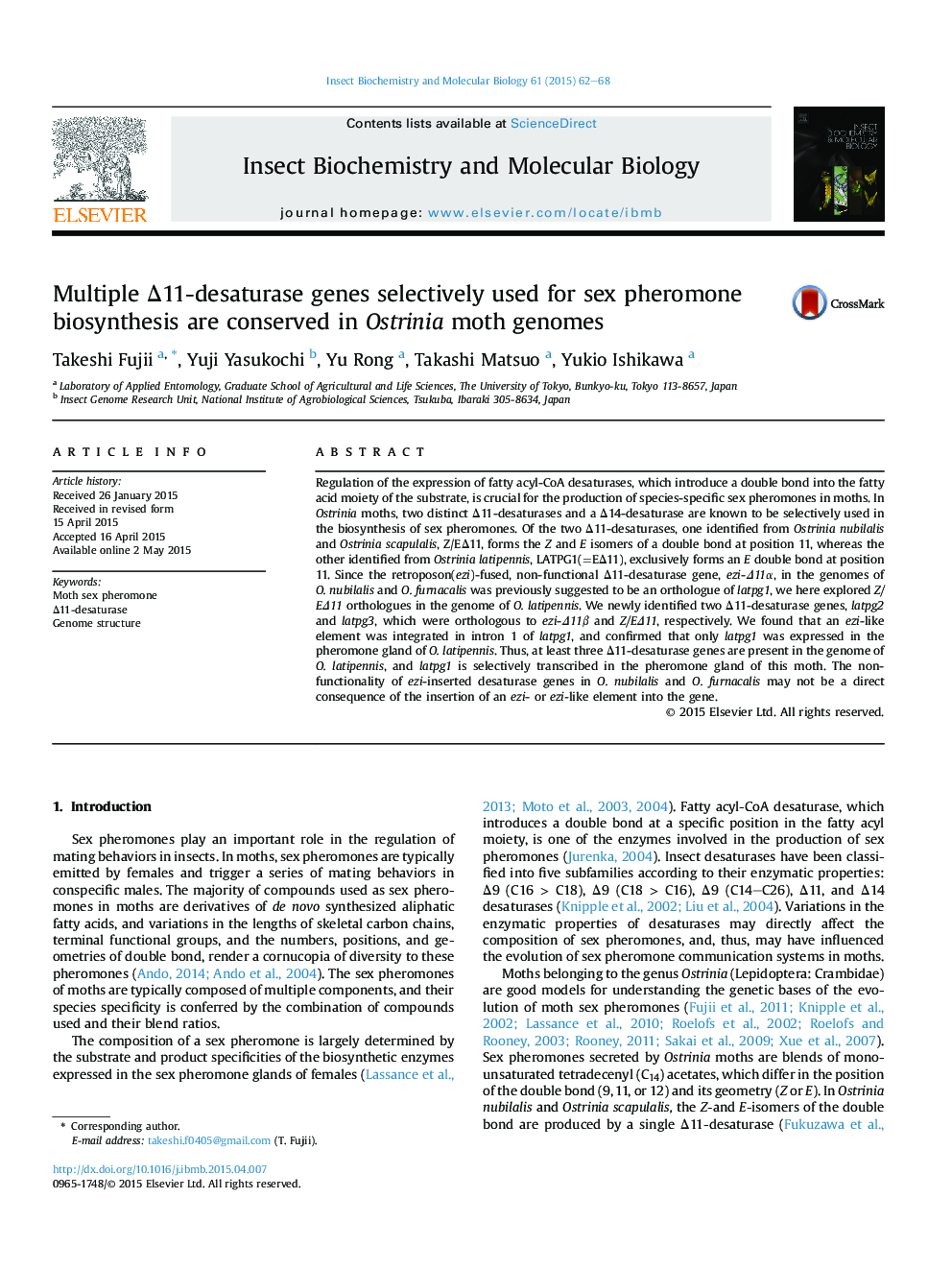| Article ID | Journal | Published Year | Pages | File Type |
|---|---|---|---|---|
| 1982032 | Insect Biochemistry and Molecular Biology | 2015 | 7 Pages |
•Δ11-desaturases are unique to moths and involved in sex pheromone biosynthesis.•Three Δ11-desaturase genes, latpg1, latpg2, and latpg3, were identified in the genome of Ostrinia latipennis.•The latpg1 gene was selectively expressed in the pheromone gland of O. latipennis.•Orthologues of latpg1–3 were conserved in the genomes of congeners, and utilized in a species-specific manner.•The presence/absence of the retroposon ‘ezi’-like fragment in or near the gene was not directly linked with its expression.
Regulation of the expression of fatty acyl-CoA desaturases, which introduce a double bond into the fatty acid moiety of the substrate, is crucial for the production of species-specific sex pheromones in moths. In Ostrinia moths, two distinct Δ11-desaturases and a Δ14-desaturase are known to be selectively used in the biosynthesis of sex pheromones. Of the two Δ11-desaturases, one identified from Ostrinia nubilalis and Ostrinia scapulalis, Z/EΔ11, forms the Z and E isomers of a double bond at position 11, whereas the other identified from Ostrinia latipennis, LATPG1(=EΔ11), exclusively forms an E double bond at position 11. Since the retroposon(ezi)-fused, non-functional Δ11-desaturase gene, ezi-Δ11α, in the genomes of O. nubilalis and O. furnacalis was previously suggested to be an orthologue of latpg1, we here explored Z/EΔ11 orthologues in the genome of O. latipennis. We newly identified two Δ11-desaturase genes, latpg2 and latpg3, which were orthologous to ezi-Δ11β and Z/EΔ11, respectively. We found that an ezi-like element was integrated in intron 1 of latpg1, and confirmed that only latpg1 was expressed in the pheromone gland of O. latipennis. Thus, at least three Δ11-desaturase genes are present in the genome of O. latipennis, and latpg1 is selectively transcribed in the pheromone gland of this moth. The non-functionality of ezi-inserted desaturase genes in O. nubilalis and O. furnacalis may not be a direct consequence of the insertion of an ezi- or ezi-like element into the gene.
Graphical abstractFigure optionsDownload full-size imageDownload high-quality image (217 K)Download as PowerPoint slide
